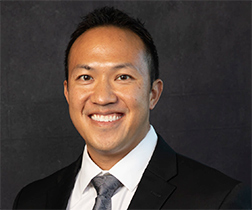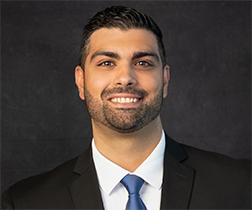What is LPFL Reconstruction?
LPFL reconstruction or lateral patellofemoral ligament reconstruction is a surgical procedure employed to treat patients with severe patellofemoral instability. The procedure involves replacing a torn lateral patellofemoral ligament with a part of a tendon taken from your leg. The main objective of the LPFL reconstruction is to tighten the knee joint and restore its stability.
Anatomy of the LPFL
The lateral patellofemoral ligament (LPFL) is a section of the complex network of soft tissues that stabilize the knee joint. The LPFL extends from the superior lateral patella to the lateral femoral epicondyle, a bony protrusion, and attaches the lateral patella to the lateral femoral epicondyle. The patella (kneecap) and femur (thighbone) together comprise the patellofemoral joint.
Indications for LPFL Reconstruction
Some of the indications for LPFL reconstruction include:
- Severe knee ligament injury
- Medial patellar subluxation
- Chronic anterior knee pain exacerbated with knee flexion.
- Failure of conservative treatment to relieve knee pain and disability
Preparation for LPFL Reconstruction
Preoperative preparation for LPFL reconstruction will involve the following steps:
- A thorough examination by your doctor to check for any medical issues that need to be addressed prior to surgery.
- Depending on your medical history, social history, and age, routine blood work and imaging may be ordered for safely conducting surgery.
- You will be asked if you have any allergies to medications, anesthesia, or latex.
- You should inform your doctor of any medications, vitamins, or supplements that you may be taking.
- You should refrain from medications or supplements such as blood thinners, aspirin, or anti-inflammatory medicines for a week or two prior to surgery.
- You should refrain from alcohol or tobacco at least 24 hours prior to surgery.
- You should not consume any solids or liquids at least 8 hours prior to surgery.
- Arrange for someone to drive you home as you will not be able to drive yourself post surgery.
- A written consent will be obtained from you after the surgical process has been explained in detail.
Procedure for LPFL Reconstruction
The procedure is usually performed arthroscopically under general anesthesia. A tissue graft is harvested from the patellar tendon or hamstring tendon. The patellar tendon connects the bottom of the kneecap (patella) to the top of the shinbone (tibia). The hamstrings are muscles located in the back of your thigh.
For a patellar tendon graft, your surgeon makes an incision over the patellar tendon and takes out the middle third of the patellar tendon, along with its attachment to the bone. The remaining portions of the patellar tendon on either side of the graft are sutured back after its removal and the incision is closed.
For a hamstring tendon graft, a small incision is made over the hamstring tendon attachment to the tibia and the two tendons are stripped of the muscle and the graft is prepared.
Your surgeon will make two small incisions around your knee. An arthroscope, a small video camera, is inserted through one incision to see the inside of the knee joint. Along with the arthroscope, a sterile solution is pumped into the knee to expand it and enable your surgeon to have a clear view of the inside of the joint. The torn ligament is removed and the pathway for the new tissue graft is prepared.
The arthroscope is reinserted into the knee joint through one of the small incisions. Small holes are drilled into the upper and lower leg bones around the knee joint. These holes form tunnels in your bone to accept the new graft. The graft is then pulled through the predrilled holes in the tibia and femur. The new tendon is then fixed into the bone with screws to hold it in place while the ligament heals into the bone. The wounds are then closed with sutures and dressed.
Postoperative Care Instructions and Recovery
In general, postoperative care and recovery process after LPFL reconstruction involves the following:
- You will be transferred to the recovery area to be monitored until you are awake from the anesthesia.
- Your nurse will monitor your blood oxygen level and other vital signs as you recover.
- You will be placed in a knee brace for 6 weeks with instructions on restricted weight-bearing. You are encouraged to walk with assistance as frequently as possible to prevent blood clots.
- You are advised to keep your leg elevated while resting to prevent swelling and pain.
- Use of continuous passive motion machine (CPM) at home is strongly advised to avoid developing scar tissue and stiffness in the joint as the ligament heals.
- You will notice some pain and discomfort in the knee area. Medications will be provided for comfort.
- Gentle range of motion exercises is advised to facilitate knee movement post surgery.
- Anti-nausea medications will be prescribed as needed for discomfort associated with anesthesia.
- Keep your surgical site clean and dry for at least 48 hours. Instructions on surgical site care and bathing will be provided.
- Refrain from smoking as it can negatively affect the healing process.
- Eating a healthy diet rich in vitamin D is strongly advised to promote healing and a faster recovery.
- Refrain from strenuous activities or lifting heavy objects for the first couple of months. Gradual increase in activities over a period of time is recommended.
- Physical therapy is begun after 6 weeks of surgery to restore normal knee function and improve flexibility and strength.
- You will be able to return to your normal activities in a month or two; however, return to sports may take 4 to 6 months.
- A follow-up appointment will be scheduled to monitor your progress.
Risks and Complications of LPFL Reconstruction
LPFL reconstruction is a relatively safe procedure; however, as with any surgery, there are risks and complications that could occur, such as:
- Infection
- Blood clots (deep vein thrombosis)
- Nerve and blood vessel damage
- Failure of the graft
- Loosening of the graft
- Joint Pain
- Numbness
- Joint stiffness
- Decreased range of motion
Doctors Performing LPFL Reconstruction
-
Michael L. Nguyen, M.D.Shoulder &
Sports Medicine -
Paul A. Tavakolian, M.D.Hand, Wrist & Elbow














